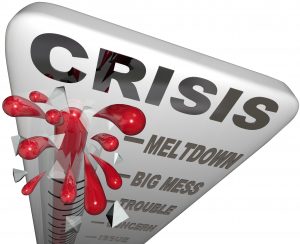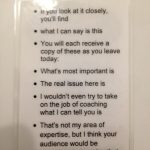by Josh Weiss
Our team recently attended an event where we supplied a raffle prize. We decided to have some fun with it, creating a “Crisis Recovery Raffle Prize” which consisted of gift certificates from Massage Envy, Chipotle and Uber. Three companies that recently faced different types of media crisis.
Yes, most attendees totally missed the joke but those that got it thought it was amusing like we did. As a public relations pro, it’s easy to focus on all the good news we create for our clients to grow their positive image and brand, but too many companies fail to prepare in advance for a crisis so that the can quickly deal with it should a media emergency occur. Even fewer companies have a crisis recovery plan on the shelf ready to put in place whenever needed.
Let me share a few crisis examples that Businesses faced in 2017 where a crisis prep and crisis recovery plan would have been helpful.
Massage Envy:
More than 180 women came out accusing Massage Envy franchise employees of sexual assault. The story broke in one news outlet and quickly became a national story. Initially the company didn’t respond and it took more than a day before the CEO made his first statement, which essentially said that a more thorough response would be coming in the following days.
Here’s the thing: Massage Envy has more than 25,000 employees at more than 1,170 franchised locations. They can’t be expected to know everything that happens during every customer interaction, in every locally owned franchise. But they should have anticipated this kind of accusation would occur at some point, so they should have had a PR plan on the shelf ready to dust off and respond immediately.
From the outside, the company appeared completely unprepared. While I do give kudos to what their team eventually said and tried to do to show they are working to stop future possible incidents, they simply didn’t act fast enough the slow or influence the spread of negative stories. While nothing they could have done would have stopped a negative story, a faster response could have stopped or slowed the bleeding much earlier, creating less long-term risk to the company and making it easier for their brand to recover.
Uber:
2017 wasn’t a good year for Uber either. The number of issues they had is actually comical and likely will be taught in PR classes as a perfect self-created storm. Early in 2017 they faced a #deleteUber campaign to protest actions which made it appear the company was siding with President Trump and his recently proposed travel ban. After more than 200,000 people canceled their accounts, before the CEO was one of the last company CEOs to quit a Presidential council that helped slow the bleeding.
Shortly thereafter, a former engineer wrote about sexual harassment and gender bias at Uber. Her blog post claimed that her manager tried asking her to take part in his “open relationship,” then threatened to fire her for reporting it to HR. Making matters even worse, HR allegedly didn’t reprimand the man because he was a “high performer.”
As it that wasn’t enough, Uber CEO Travis Kalanick got into a fight with an Uber driver over falling fares. Dashcam video of the altercation went viral after being published by Bloomberg. Add on a data leak and a string of other issues – Uber logged a record-breaking quarterly loss, and several executives jumped ship, including Kalanick and President Jeff Jones.
Surely, it’s no easy task to handle one single crisis for a company of Uber’s magnitude… But the ridesharing company experienced several throughout the course of the year, displaying deep issues within the organization that needed to be addressed.
With new executives in charge of altering brand perception, hopefully 2018 will start (and end) with a much cleaner slate. For that to happen, there needs to be transparency and a lot of time and effort spent on reputation recovery efforts.
They started that by trying to get all their dirty laundry out to the public, only a few weeks ago when the new leadership team announced that in 2016 the company paid off some hackers with $100,000 not to use stolen data from more than 57 million rider and driver accounts. My guess is if the new leadership finds anything else, it will be disclosed in the coming weeks and months in hopes that they can start from a clean slate.
Ultimately, will Uber be okay? I’d assume yes, but these crises definitely hurt their market share and their top competitor, Lyft, is said to be seeing a big boost thanks in part to Uber’s missteps.
Chipotle:
Chipotle has worked hard to recover from the E. coli outbreak in late 2015 that affected restaurants in 14 states. While the number of people that got sick was actually low, the lost perception of Chipotle ingredients being healthier compared to other fast food services took a huge hit putting the long-term future of the entire company at risk.
It’s been a slow slog for Chipotle to regain the public trust. I know several people that still won’t eat there, or significantly curtailed how often they eat there. But one also cannot deny that Chipotle has worked hard to implement new food safety protocols, hiring experts to direct the new program in an effort to reposition the chain as one of the industry leaders in food safety. Just as sales (and their stock price) were steadily improving, Chipotle had relapse as one of their employees caused a norovirus outbreak at one location in Virginia in July. Norovirus is a highly contagious illness, but it is was not food related. The incident reminded the public of earlier incidents, renewing the perception of food safety problems forcing the company to take a few steps backwards before again trying to regain their past success and reputation.
What we can learn from these PR Crises –
Each of these examples are very different from one another. Some are cultural or self-imposed like Uber. Others may come from the supply chain or a missed process like the initial E. Coli crisis faced by Chipotle. While other crisis might be somewhat predictable like the Massage Envy example.
No matter what type of PR crisis, it’s the failure to anticipate and prepare in advance that is the biggest risk to many companies. A slow, poorly thought out response makes a story significantly worse than it already would have been.
The reality is that you can’t stop a negative story from occurring, but your actions can make the effects of a media crisis less damaging both in the short and long-term.
Have you ever thought about what possible (or even likely) disaster scenarios could happen to your company?
Are you creating a step by step guide of how you’d handle it if that scenario did occur?
Have you shared our plan or thoughts with your PR team or outside consultants so that they can vet the response strategy, provide feedback and know what to do if that story breaks?
Have you asked our PR team or outside consultants to start building that plan for you?
By planning ahead and being prepared, your efforts can aid and guide your company to a much faster reputation recovery and regain confidence to among your current and prospective customers.
note: Sierra Oshrin contributed to this blog










